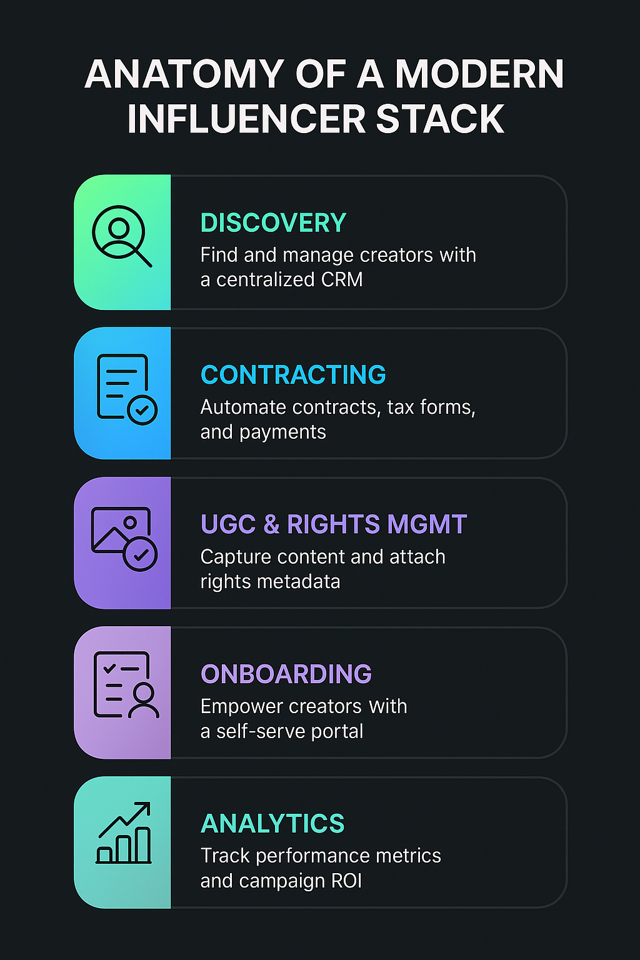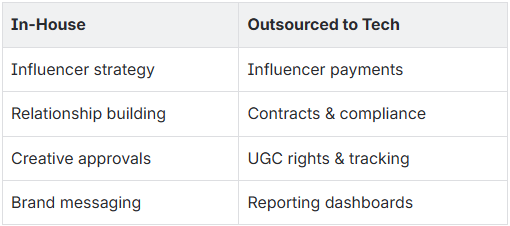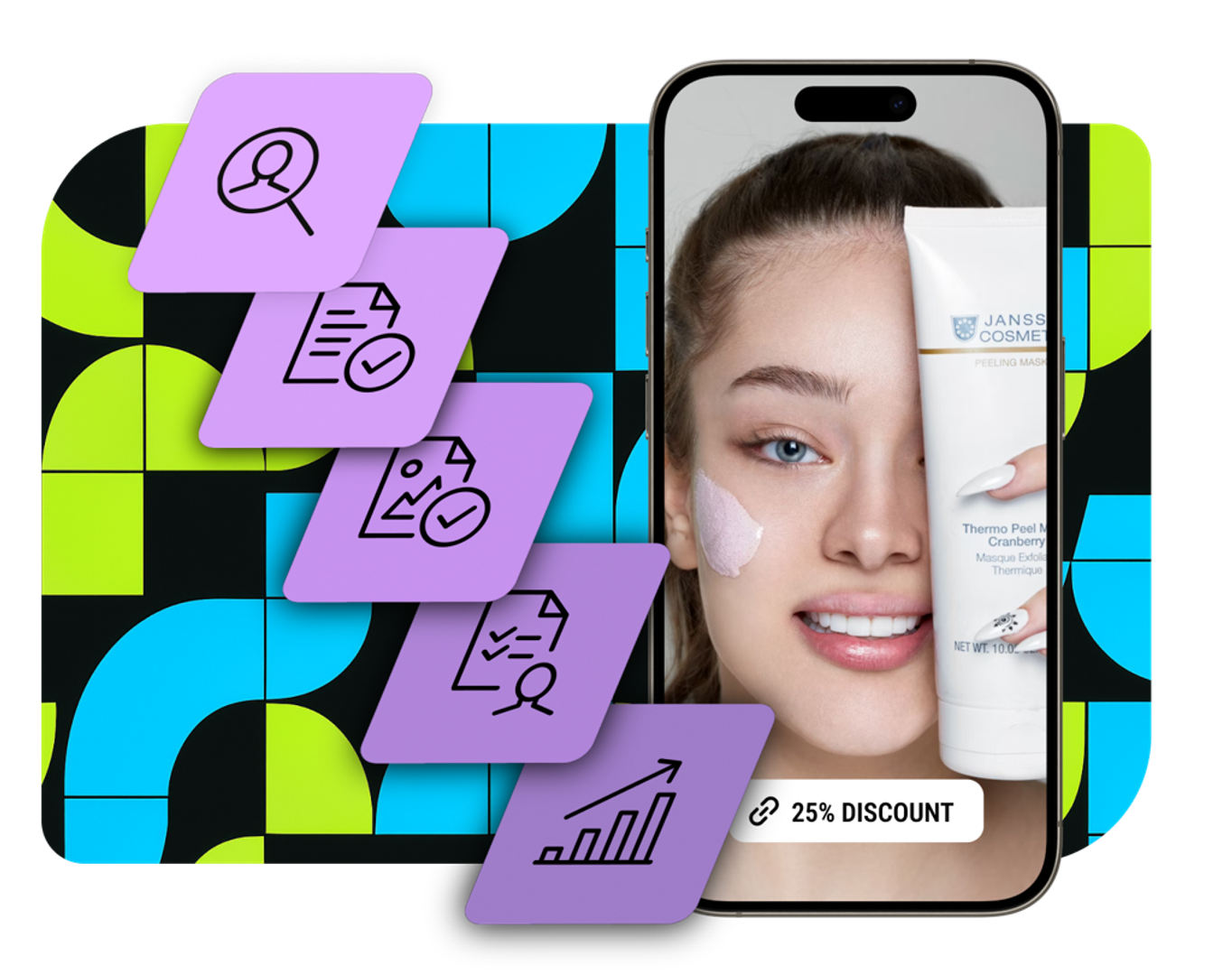The Influencer Tech Stack: What Top Brands Use to Run Modern Influencer Programs
Picture this: You’re running a holiday influencer campaign. Influencers are emailing contracts, uploading content to Dropbox, pinging you in Texts, and sending invoices via PayPal. Your inbox is a battlefield. Now multiply that by 50 influencers. This is what happens when you don’t have a stack.
Influencer marketing isn’t just about vibes and viral content anymore. It’s evolved into a high-functioning, operationally complex channel with its own stack of specialized software, integrations, and workflows. What used to be a few DMs and spreadsheets has transformed into a full-blown system that looks more like enterprise sales than social media.
If you're running influencer programs today, you're not just managing people, you're managing pipelines. And like any modern marketing pipeline, success comes down to the quality of your tech stack.
Why the Stack Matters Now More Than Ever
Gone are the days when brands could cobble together a few tools and call it a strategy. As influencer spend scales, and expectations around performance, rights usage, and compliance grow, brands are building layered stacks that rival their e-comm or growth teams.
Disconnected tools create friction: emails get buried, contracts stall, rights go undocumented, and reporting turns into a mess. Speed and clarity are everything.
To stay ahead, top brands are investing in integrated systems that manage the full lifecycle of influencer work, from discovery to analytics. Think of it like an "Influencer OS."

Inside the Modern Influencer Tech Stack
1. Discovery & Relationship Management (Influencer CRM)
- Find and filter influencers based on audience, content, and prior results
- Track communications, contracts, and deliverables
2. Contracting, Payments & Compliance
- Digital contract flows with embedded IP and usage terms
- Automated 1099 collection and payouts
3. Content Collection & Rights Management
- UGC agreements portal with tracking
- Track licensing terms and expiration
4. Onboarding & Influencer Enablement
- Self-serve portals for influencers with briefs, uploads, and feedback loops
- Integrated contract and tax forms
- Auto-review and approval workflows
5. Analytics & Reporting
- Real-time campaign dashboards across platforms
- Track ROI by influencer, asset, or campaign
- Exportable reports for exec teams
In-House vs. Outsourced: Who Owns What?


